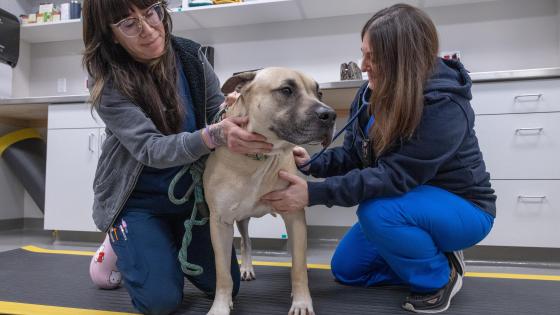
Everything You Need to Know About Heatstroke in Cats & Dogs
Summer is a season of fun and adventure, but it also brings along scorching temperatures that can pose serious risks to our pets. Heatstroke, or hyperthermia, is a life-threatening condition that can affect dogs and cats, and as responsible pet owners, it is important to keep them safe and comfortable during hot weather. When it comes to heatstroke, early recognition is crucial in ensuring the well-being of our animal companions. By being vigilant and knowledgeable, you can make a significant difference in your pet's health and potentially save their life.
Signs of heatstroke in dogs and cats:
Heatstroke can be fatal if not treated quickly. Signs of heatstroke include:
- Heavy panting
- Vomiting or diarrhea
- Excessive drooling
- Red gums or tongue
- Restlessness or agitation
- Weakness or confusion
- Seizures
- Uncoordinated movements or collapse
What should you do if your pet is exhibiting signs of heatstroke?
Families who suspect that their pet may be experiencing heatstroke should call their regular veterinarian or DoveLewis immediately at 503-228-7281.
In the meantime, as you make your way to an animal hospital, you can:
- Lower your pet’s body temperature by applying towels soaked in cool water to the hairless areas of the pet’s body (the tips and back of the ears, foot pads, belly, and inner thighs). Do NOT use ice or extremely cold water because that can worsen the problem. Avoid completely immersing a pet in water, since heat cannot leave the body as effectively in this situation, and extreme changes in body temperature are dangerous to the pet’s health.
- Use a fan to help cool the animal. Even if the pet seems to cool down, it’s still imperative to visit a veterinarian immediately, as temperatures often spike again or cool below a safe, normal temperature.
What is heatstroke and how does it happen?
Heatstroke is a life-threatening condition that occurs when an animal's body temperature rises to dangerous levels, typically above 103°F (39.4°C). It can happen when pets are exposed to high temperatures and unable to regulate their body heat effectively. Pets primarily rely on panting as their primary cooling mechanism, which may not be sufficient in extreme heat conditions.
Why are pets more susceptible to heatstroke?
Pets are more susceptible to heatstroke than humans for many reasons. Dogs and cats have limited cooling mechanisms and cannot cool themselves as efficiently as humans. Their fur coats and fewer sweat glands make it harder for them to dissipate heat effectively. It is important for pet owners to be attentive to their pets on hot days because pets may not show obvious signs of discomfort or may not be able to communicate their distress. Pets can also absorb heat more rapidly than humans, especially if they are exposed to direct sunlight or confined in hot environments like cars or poorly ventilated spaces.
Prevention is Key
- Never leave your pet in a car. On a mild to hot day, temperatures in a closed car (even with the windows cracked) can exceed 120 degrees in minutes, creating a very dangerous condition for any animal. Cracking a window or parking in the shade does not help.
- Give your pet extra water. Staying hydrated is crucial on hot days to avoid illness. Whether your pet is indoors or outdoors, be sure to fill their water bowls several times a day.
- Don’t overdo outdoor exercise. Dogs don’t know when they need a break, so it’s important to stop frequently for shaded breaks and offer plenty of water.
- Protect your pet’s paws from hot surfaces. Walk your pet in the grass or the shade whenever possible. Quick tip: if the pavement is too hot for your bare hands or feet, it’s too hot for their paws. If you need to take them outside to do their business, try wetting the surface with a hose or water bottle to help make it a little cooler for them.
- When in doubt, stay indoors. Avoid being outside for long periods of time during the hottest time of the day, 10 a.m. to 5 p.m. Take walks earlier in the morning to avoid as much of the heat as you can. Animals can get sick quickly on hot days, even if they are in the shade.
Recent Posts
Paws on the Trail: Hiking Safely and Happily with Your Adventure-Loving Pet
Keeping safety in mind is essential to ensure a successful and enjoyable hiking adventure. So, lace up your hiking boots, and let's unleash the adventure!
Marijuana Toxicity in Pets: What You Need to Know
As availability of marijuana increases in the Portland area since legalization, so have the number of marijuana toxicity cases treated at DoveLewis. Our doctors warn pet owners of the potential risks to their dogs and cats if marijuana is ingested in any form.




